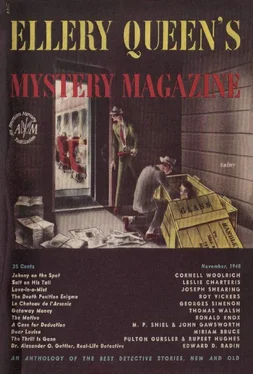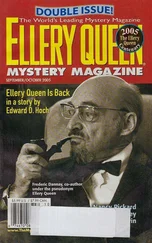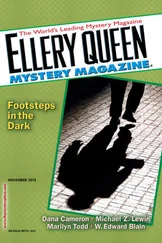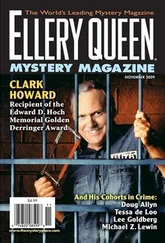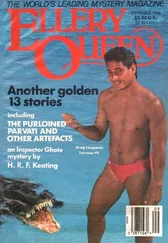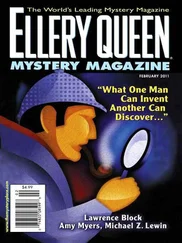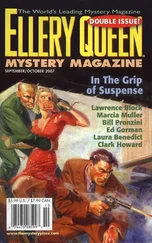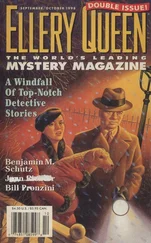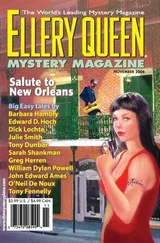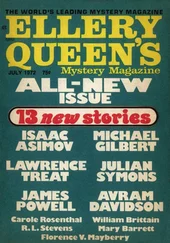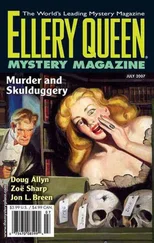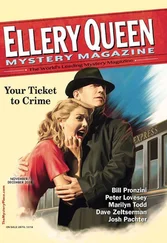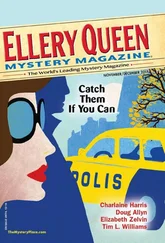Miriam Bruce - Ellery Queen’s Mystery Magazine. Vol. 12, No. 60, November 1948
Здесь есть возможность читать онлайн «Miriam Bruce - Ellery Queen’s Mystery Magazine. Vol. 12, No. 60, November 1948» весь текст электронной книги совершенно бесплатно (целиком полную версию без сокращений). В некоторых случаях можно слушать аудио, скачать через торрент в формате fb2 и присутствует краткое содержание. Город: Mew York, Год выпуска: 1948, Издательство: The American Mercury, Жанр: Детектив, на английском языке. Описание произведения, (предисловие) а так же отзывы посетителей доступны на портале библиотеки ЛибКат.
- Название:Ellery Queen’s Mystery Magazine. Vol. 12, No. 60, November 1948
- Автор:
- Издательство:The American Mercury
- Жанр:
- Год:1948
- Город:Mew York
- ISBN:нет данных
- Рейтинг книги:5 / 5. Голосов: 1
-
Избранное:Добавить в избранное
- Отзывы:
-
Ваша оценка:
- 100
- 1
- 2
- 3
- 4
- 5
Ellery Queen’s Mystery Magazine. Vol. 12, No. 60, November 1948: краткое содержание, описание и аннотация
Предлагаем к чтению аннотацию, описание, краткое содержание или предисловие (зависит от того, что написал сам автор книги «Ellery Queen’s Mystery Magazine. Vol. 12, No. 60, November 1948»). Если вы не нашли необходимую информацию о книге — напишите в комментариях, мы постараемся отыскать её.
Ellery Queen’s Mystery Magazine. Vol. 12, No. 60, November 1948 — читать онлайн бесплатно полную книгу (весь текст) целиком
Ниже представлен текст книги, разбитый по страницам. Система сохранения места последней прочитанной страницы, позволяет с удобством читать онлайн бесплатно книгу «Ellery Queen’s Mystery Magazine. Vol. 12, No. 60, November 1948», без необходимости каждый раз заново искать на чём Вы остановились. Поставьте закладку, и сможете в любой момент перейти на страницу, на которой закончили чтение.
Интервал:
Закладка:
Ellery Queen’s Mystery Magazine. Vol. 12, No. 60, November 1948

The Death Position Enigma
by Roy Vickers
Roy Vickers has two significant detective-story creations to his everlasting credit. The wore important of the two is the Department of Dead Ends, that fascinating bureau of Scotland Yard which has proved Mr. Vickers to be the most brilliant contemporary manipulator of the “inverted.” detective story. The lesser conception is that of ethereal, saint faced Fidelity Dove, one of the most accomplished lady larcenists in the fictional history of crime... At the time we published THE DETECTIVE SHORT STORY: A BIBLIOGRAPHY (1942), we thought we had a first edition of THE EXPLOITS OF FIDELITY DOVE. As a matter of fact, we had in our collection two copies of this very scarce book, one bound in gray cloth and the second, identical in all other respects, bound in light blue cloth. On the basis of these two variants we listed the first edition as published in 1935 by George Newnes of London. There was nothing about either copy of the book that made us even remotely suspicious — they both seemed like genuine first editions. But recently we discovered a book which confirmed for the umpteenth time the utter fallibility of bibliographic data and research.
From one of our London bookscouts came an orange-cloth book clearly titled THE EXPLOITS OF FIDELITY DOVE. The volume contained twelve tales — exactly the same in number, sequence, titles, and text as the dozen stories in our gray and light-blue books of the same name. Now, however, there was one highly suspicious difference: the orange cloth was much superior in quality to the gray and light-blue cloth of the other copies — and better quality binding invariably suggests the true first edition. Moreover — and this is the astonishing revelation — the orange-bound volume was credited to an author by the name of David Durham!
A transatlantic checkup through our bookscout added further mystery: the British Museum of London had a record of the Durham book but it had no record that David Durham and Roy Vickers are one and the same person! The Durham book, however, was deposited for copyright at the British Museum in 1924 — eleven years prior to the volume signed as by Roy Vickers, thus establishing beyond doubt that the Roy Vickers edition was merely a reprint. Needless to add, our original bibliographic entry on Fidelity Dove was completely inaccurate.
Now, irrelevantly, read “The Death Position Enigma,” the newest Department of Dead Ends story by Roy Vickers, alias David Durham. “The Death Position Enigma” is another excellent example of Roy Vickers’s continuing mastery in the art of writing the “inverted” detective story.
Arnold Habershon, chartered accountant, was the kind of man you would never notice — a fussy little man, the slave of his own routine. When he dressed in the morning, he unconsciously timed his movements to those of the service maid, who was as regular as himself in her habits. He adjusted his tie as the maid left the flat. He knew that his breakfast would be waiting, and that on the table would be The Times and The Daily Record.
It was a largish flat for a man living by himself. Spare bedroom, never used, sitting-room, and dining-room.
From the doorway of the dining-room he could glimpse the headlines of The Record — a glimpse that ended his uncertainty. As usual, he turned and shut the door. Only, on this particular Monday morning, he took longer over it than usual.
In that paper, ran his unspoken thought, I shall probably find that I have made the traditional mistake that leads to the gallows. It will not be possible to take evasive action. It will be possible only to preserve one’s dignity.
When a respectable citizen of mild habits commits murder, his reactions are inevitably different from those of the crook who kill in the course of business. Remorse, however, is rare. Habershon’s sense of sin was transferred to Webber, his victim — for wantonly thrusting Habershon into the horror of committing murder. Such precautions as he had taken against discovery had been inspired less by fear than by a sort of moral duty to himself. If the precautions should fail — again, the blame must be laid at the door of the unspeakable Webber.
HOUSEHOLDER SHOT DEAD, proclaimed The Record. DEATH POSITION ENIGMA.
Death position enigma! “These fellers yell themselves into sheer meaninglessness!” snorted Habershon, and turned in disgust to The Times, where he found only a five-line paragraph. The Record carried two columns. Habershon read, at first with resignation, then with astonishment.
“That isn’t an enigma — it’s an absurdity — and a lie as well!” he exclaimed aloud.
He read on with the growing suspicion that someone else must have entered after he had left.
The murderer made entry by the window and left by the front door, as indicated by one-way footprints on the flower bed (photo back page) and soil trodden into the sitting-room carpet.
“But I didn’t enter by the window... Oh yes, I did! When I went back.”
In a mess of sensational verbiage, The Record had smothered a clear-cut account. On Sunday morning, a telephone linesman had called the police to Webber’s brick-built bungalow, which stood by itself on the fringe of an Essex village. A car, not that of the deceased, had left double tire tracks in the garden, from which footprints led to the window of the sitting-room. The dead man was found sitting at his writing table. The position was so unusual that the photographs taken by the police were even more descriptive than the report, more credible than the actuality.
The photographs showed a bulky man, apparently alive, leaning forward in a natural position, his left hand holding the telephone receiver to his ear, the left elbow resting on the table. The right hand was clenched, the thumb extended downwards — the right arm suspended exactly nine and one-half inches above the writing table.
Thus the illusion was complete of a man interrupted in a telephone conversation by the entry of a friend. While continuing to speak on the telephone the man signals to his friend that some joint hope has been frustrated. Or he might have been indicating some fiat object on the table. Whatever it was, the fist and the extended thumb gave an impression of great urgency.
Called on the Sunday morning, Detective Inspector Karslake certainly regarded the position of the corpse as an enigma. It made sense only if one could imagine that Webber had been suddenly frozen to death, whereas in fact he had been killed by a pistol shot. The body of a man who has been shot did not, he knew, behave as if the man had been suddenly frozen to death. The pose was so lifelike — one waited for the thumb to come down on the table! It was like one of those statues of arrested motion — the horse with one hoof perpetually poised.
“We don’t know yet whether he ever said anything on that telephone, Doctor,” said Karslake. “But we know that he lifted the receiver at around nine-thirty on Saturday night. As the receiver was not replaced, the girl sounded the buzzer but got no answer. In the morning a linesman came here and — when he saw that — called the local police.” Karslake glared at the corpse as if it were a personal insult. “Have you ever seen anything like it, Doctor?”
“Not exactly like it. But you’ve seen freak effects yourself caused by rigor mortis.”
Читать дальшеИнтервал:
Закладка:
Похожие книги на «Ellery Queen’s Mystery Magazine. Vol. 12, No. 60, November 1948»
Представляем Вашему вниманию похожие книги на «Ellery Queen’s Mystery Magazine. Vol. 12, No. 60, November 1948» списком для выбора. Мы отобрали схожую по названию и смыслу литературу в надежде предоставить читателям больше вариантов отыскать новые, интересные, ещё непрочитанные произведения.
Обсуждение, отзывы о книге «Ellery Queen’s Mystery Magazine. Vol. 12, No. 60, November 1948» и просто собственные мнения читателей. Оставьте ваши комментарии, напишите, что Вы думаете о произведении, его смысле или главных героях. Укажите что конкретно понравилось, а что нет, и почему Вы так считаете.
